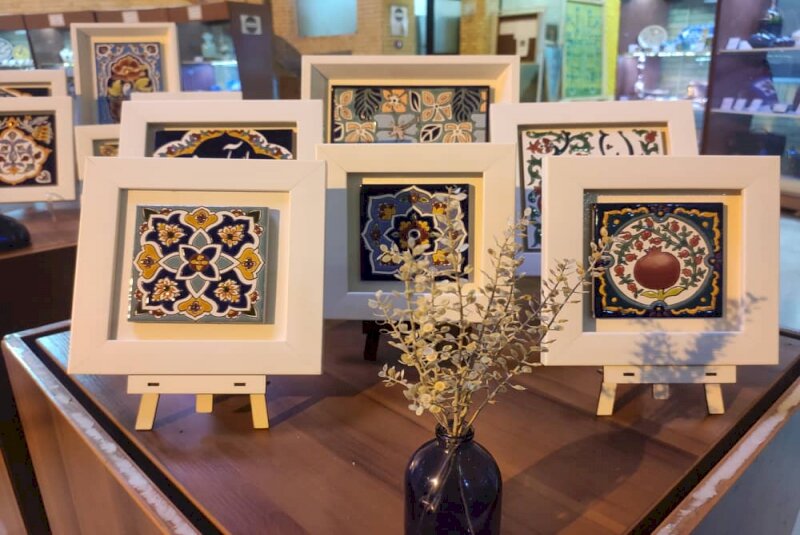Exquisite tilework on show at ministry headquarters

TEHRAN – Examples of traditional Haft-Rang (“Seven-colored”) tiles have been put on show at the headquarters of the Ministry of Cultural Heritage, Tourism, and Handicrafts in Tehran.
The five-day exhibition is organized to mark Yalda Night, which Iranians cherish in honor of the longest night of the year.
According to organizers, the name Haft-Rang does not imply an exact number of colors but it shifts the focus on special technics needed to make the tiles.
Today, Haft-Rang tiles are mainly made in 15 by 15 cm in almost seven colors: blue, turquoise, red, yellow, fawn, black, and white. The technic prevents the colors to be mixed into each other because they are separated by lines of a special kind of ink with oil and magnesium components.
Haft-Rang tile reached its perfection in Shiraz. Haft Rang tiles of Shiraz differ from other cities in quality and chemical components of its glaze, according to Visit Iran.
One of the best examples of using Haft-Rang tiles is Nassir ol-Molk mosque that is also called the Pink Mosque. Other architectures of Shiraz that have benefited from Haft Rang tiles are the Vakil mosque, Narenjestan mansion, and Afif Abad Garden. Moreover, a top example of Haft-Rang tiles can be found in the UNESCO-registered Golestan Palace in downtown Tehran.
With 14 entries, Iran ranks first globally for the number of cities and villages registered by the World Crafts Council, as China with seven entries, Chile with four, and India with three ones come next.
The value of Iran’s handicrafts exports stood at $120 million during the first eleven months of the past Iranian calendar year 1399 (March 20, 2020 – February 18, 2021), Mehr reported. The country’s handicrafts exports slumped during the mentioned months in comparison to the same period last a year earlier due to the damage the coronavirus pandemic has inflicted on global trade.
The Islamic Republic exported $427 million worth of handicrafts during the first eleven months of the calendar year 1398. Of the figure, some $190 million was earned via suitcase trade (allowed for customs-free and tax-free transfer) through 20 provinces, according to data compiled by the Ministry of Cultural Heritage, Tourism and Handicrafts.
The public exhibit will be running through December 22.
AFM
